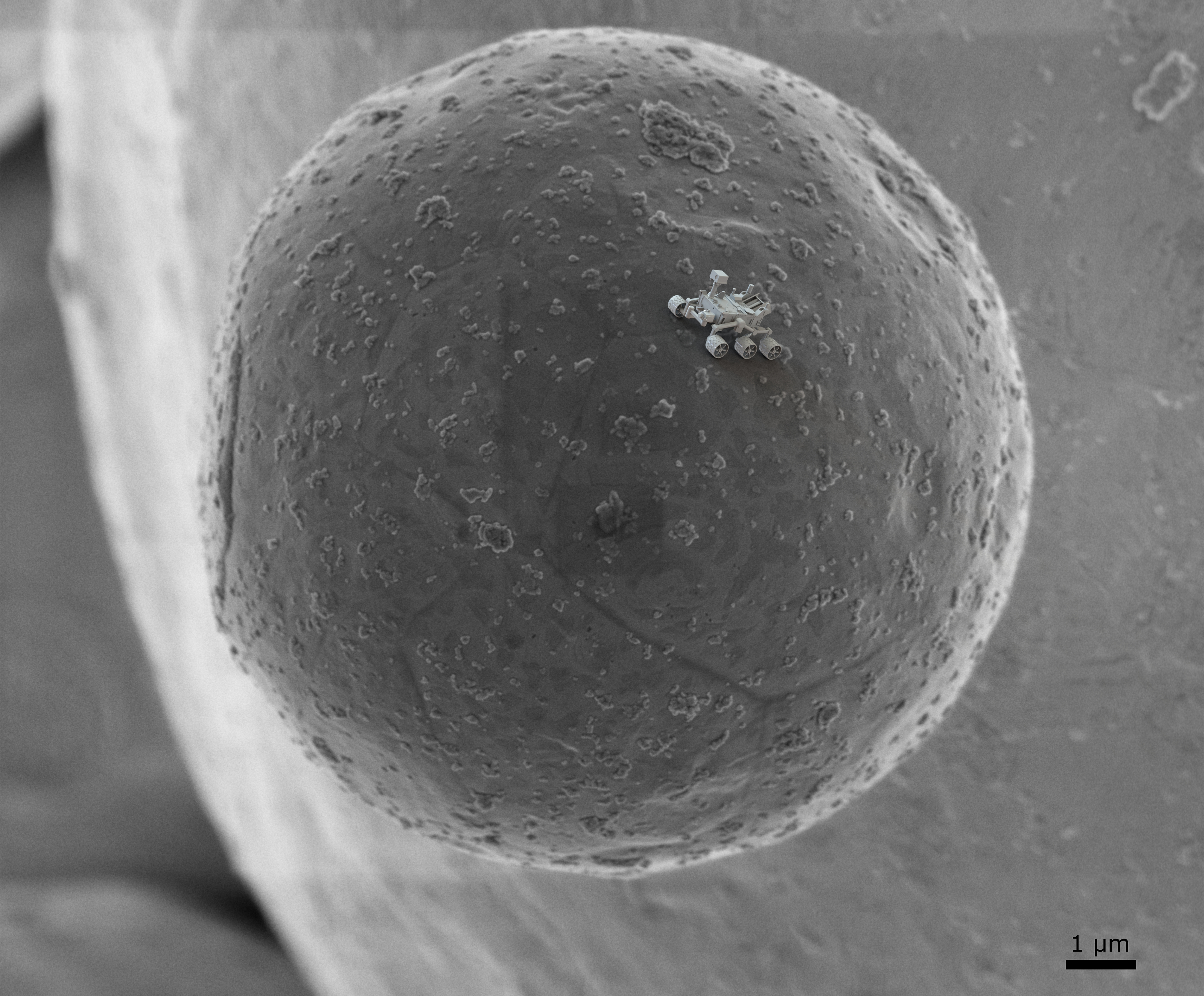NNCI Image Contest 2019 - Whimsical
Most Whimsical
Artists in this category playfully used micro and nanoscale images as the foundation to build scenes. Click on the image you think is most whimsical in order to vote for it. You may vote for only one image in this category.
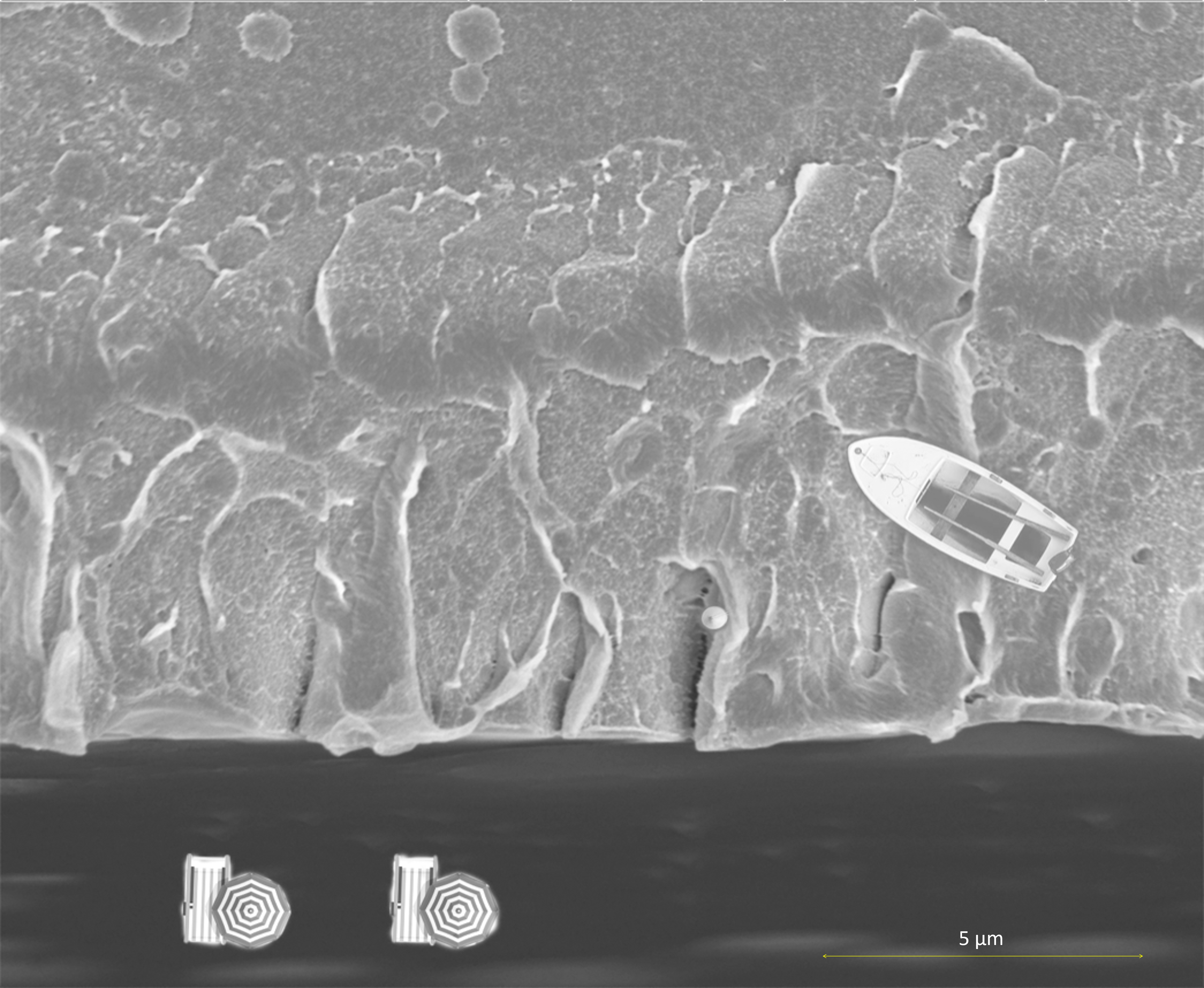
Happiness Comes in Waves
Artists: Seefat Farzin and Mohammad Mazharul Islam, Graduate Students, Univ. of Nebraska-Lincoln
NNCI Site: NNF
Tool: FEI Nova NanoSEM 450
A Scanning Electron Microscopy (SEM) image of the cross-section of an ion-conducting polymer (sulfonated polysulfone in this case) under high vacuum. Ion conducting polymer plays a crucial role in the performance of electrochemical devices to conduct necessary ions between two electrodes (anode and cathode) and separate the two electrodes. The close view of the membrane using SEM reveals the morphology which helps to understand the formation of nano-channels and pore distribution that further demonstrate how ions conduct. In this image, the interesting view of the cross-section has been reimagined as a serene summer beach.
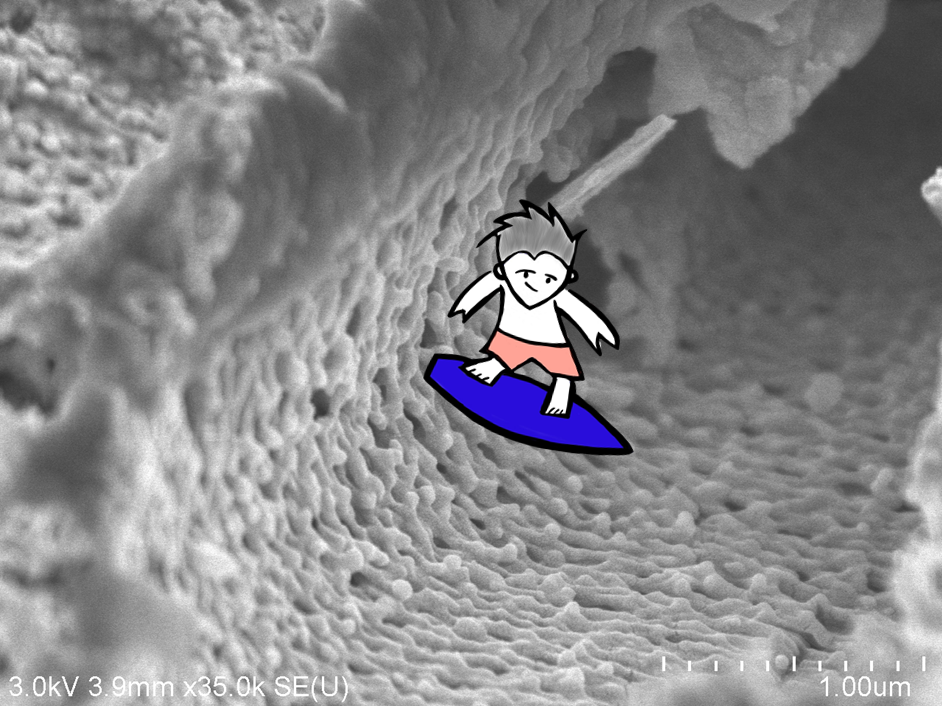
Polymer Tunnel
Artist: Xin Tong, Postdoc in the School of Civil and Environmental Engineering and Brook Byers Institute of Sustainable Systems, Georgia Tech
NNCI Site: SENIC
Tool: Hitachi SU8010 scanning electron microscope FE-SEM
Description: The image shows a micrometer-sized pore of a polyvinylidene fluoride (PVDF) water filtration membrane. The research aimed to fabricate a water filtration membrane with micropores which can let water molecules pass through whereas blocking the contaminants in water such as microorganisms, suspended particles, and natural organism matters.
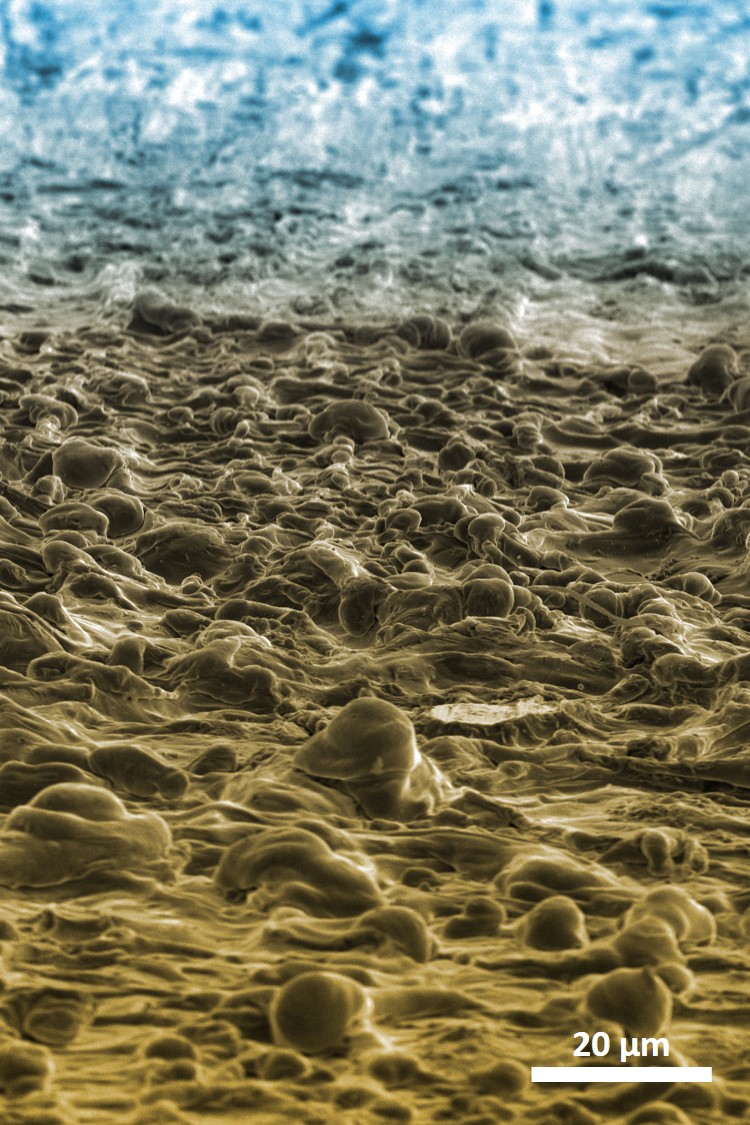
High Voltage Breakdown of Metal for Pulsed Power Liners
Artists: Samuel W. Cordaro, Graduate Student, and Ryan Nicholl, Nano3 Staff, University of California-San Diego
NNCI Site: SDNI
Tool: FEI Quanta FEG 250 Scanning Electron Microscope
Plasma formation in a high voltage coaxial vacuum gap is characterized by the surface irregularities of the cathode. As current and voltage is passed through the cathode, surface irregularities on the micrometer scale heat up and explode, sending plasma across the gap. These explosions leave large craters of molten cathode material that cools and forms larger surface irregularities.

Girl with a Flower: Self-assembled flower derived from a single spherical liquid crystalline droplet
Artist: Wei-Shao Wei, PhD student, and Arjun Yodh, faculty member, Physics and Astronomy, University of Pennsylvania
NNCI Site: MANTH
Tool: Quanta 600 FEG ESEM
Liquid drops are typically spherical (think of oil drops in salad dressing), but when conditions are “just right” they can change shape. Here we discovered that liquid crystalline oligomer drops can experience spectacular and reversible shape transitions upon cooling, from spheres to flowers. The spontaneous shape transitions are driven by the radial migration of oligomer chains with varying length to different regions in the drop, tipping the balance of free energy. The portrait painting dominates the colorized scanning electron microscopy image and highlights a flower-shape structure that evolved from a single drop of liquid crystalline oligomers. We thank Professor Shu Yang, Yi-Yun Ho, Yu Xia, and Sophie Ettinger for collaboration on this work.
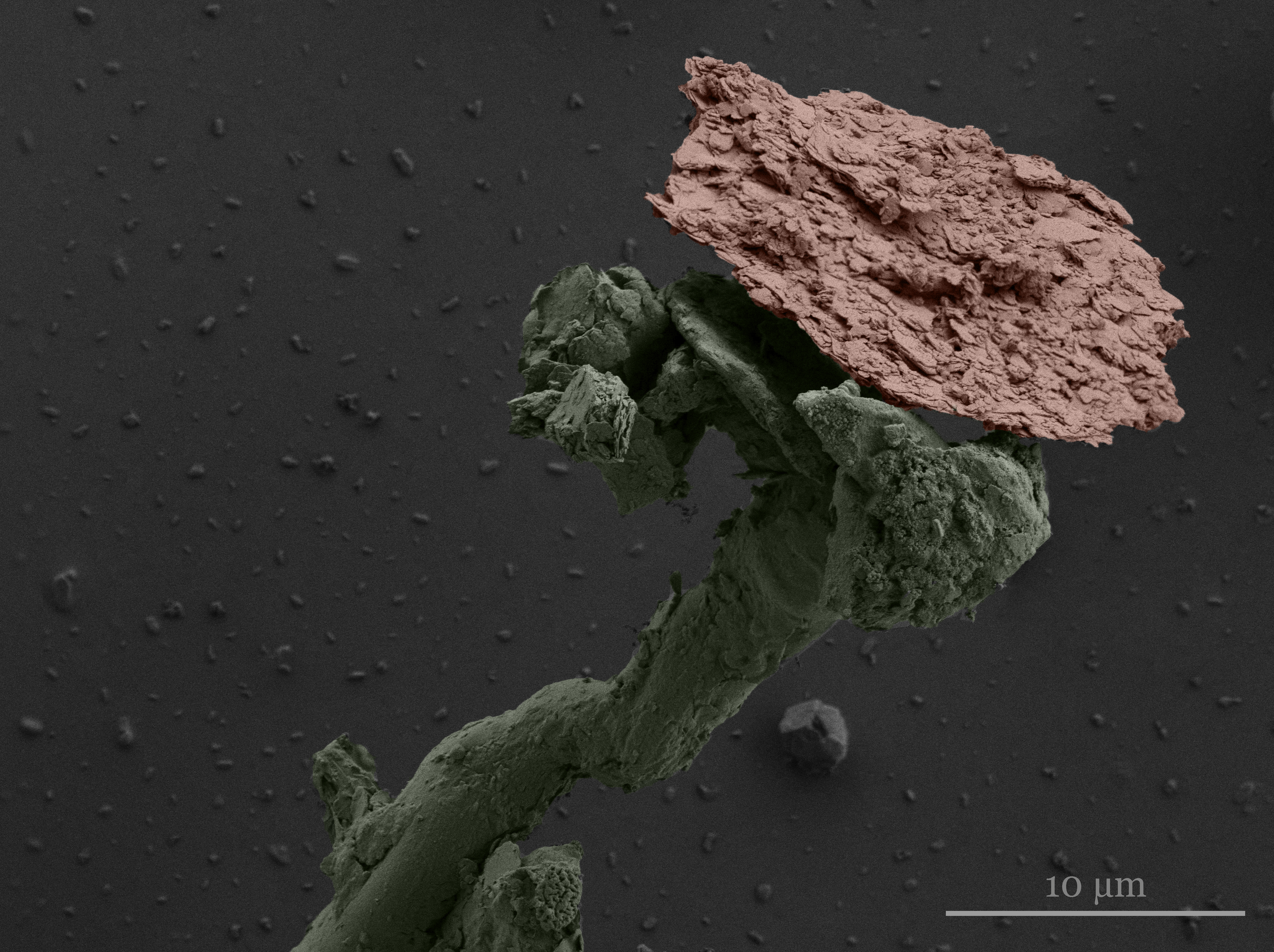
Dust Flower
Artist: Michael Valerino, PhD Candidate, Duke University
NNCI Site: RTNN
Tool: ThermoFisher Scientific (FEI) Apreo S SEM
Particulate matter (PM) refers to liquid or solid particles suspended in the atmosphere and comes from dust, combustion by-products, exhaust, fires, and even vegetation. When PM deposits on the surface of solar panels, it can reduce energy production by up to 40% resulting in ~10 to 50 billion dollars of annual losses globally. Scanning electron microscope (SEM) images of particles on the panel surfaces help us to better understand the sources impacting soiling. This piece of dust reminded our group of a flower, seemingly blooming out of an unearthly field. Even at this tiny scale, we can find familiarity.
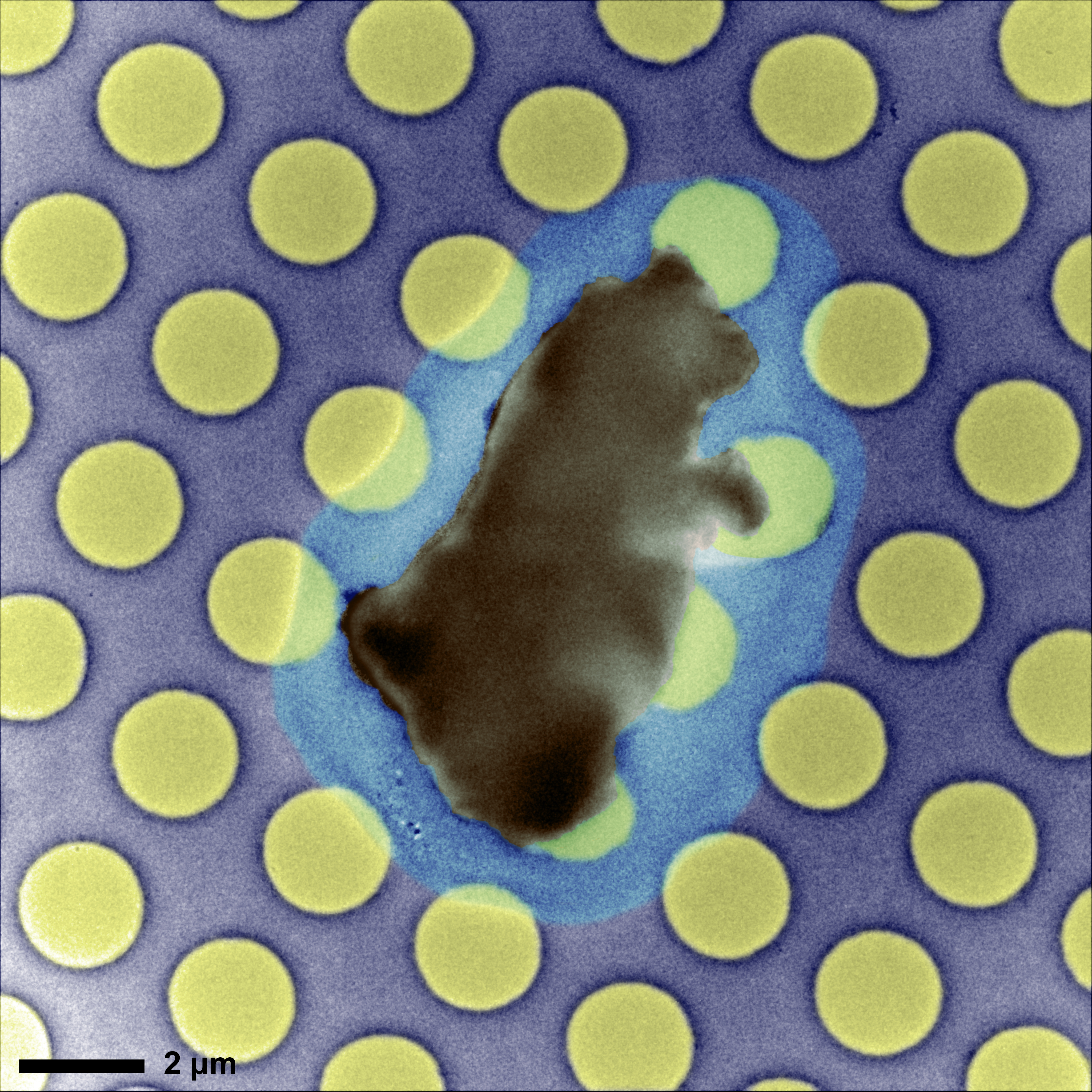
A Bear Frozen in its Midnight Dream
Artist: Jingshan Du, Student, Northwestern University
NNCI Site: SHyNE
Tool: JEOL JEM-ARM300F
It was midnight, and it was freezing cold at -170 °C. A little bear was wandering in its wonderful dream: dark sky, moon rising... oh, the moon looks like a cake and more and more are showing up. Suddenly, all became frozen, inscribed in this image and will stay forever. This is a cryogenic transmission electron microscopy image of a metal-like colloidal crystal recently reported in Science 2019, 364, 1174. 10-nm DNA-functionalized Au particles are glued by a sea of ~1-nm roaming Au particles carrying complementary DNA to form a crystalline lattice, like atoms and electrons do in crystals in a classical picture.
A Lone Walk
Artist: Amrita Banerjee, CNF Research Associate, Cornell University
NNCI Site: CNF
Tool: Zeiss Ultra 55
It's a silicon sample with ZEP520A EBL resist. I was trying to see my features at an angle and saw this dirt/resist piled up at the edge of my sample. The image is taken at CNF ZEISS using Ultra 55. The image has been colorized using an online source.
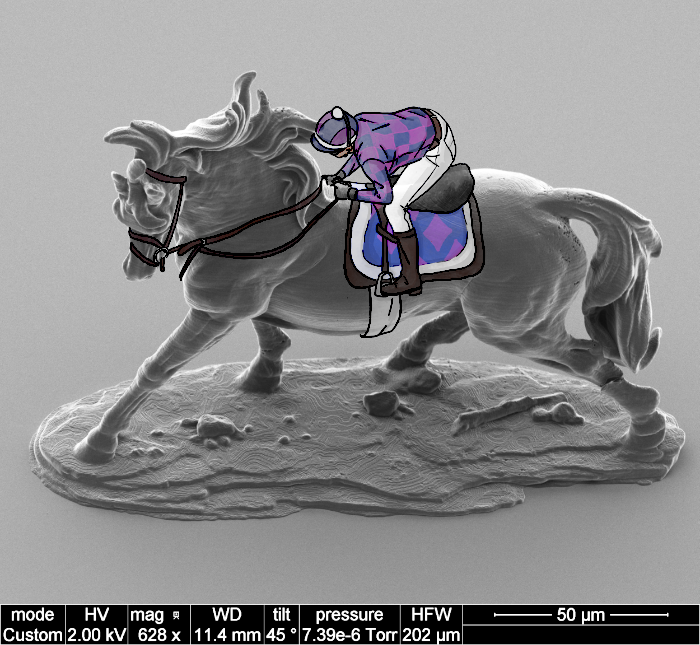
It’s an SEM photo finish...Nano-Secretariat wins by 3 voxels!
Artist: Brian Wadjdyk and Mallory Lucas
NNCI Site: KY Multiscale
Tool: Nanoscribe 3D Printing Technology
The Nano Horse structure was fabricated at the KY Multiscale NNCI Site using Nanoscribe 3D printing technology. Nano Jockey hand-drawn by Fine Arts undergrad Mallory Lucas.

I found my home country “Taiwan” in nano-world
Artist: Chang-Yu Hung, Ph.D. candidate in MSE department, VA Tech and Susan Wu
NNCI Site: NanoEarth
Tool: JEOL JEM 2100
The image of a deformed ultrafine-grained steel was shot by transmission electron microscopy (JEOL 2100). The sweet-potato shape grain colored in green is Taiwan, an island country known historically as Formosa, which 70 percent of land are covered by hills and mountains and are surrounded by neighboring blue oceans. The deformed defects (fringe-contrast straight lines) represent the rivers connecting not only the people between west coast and east coast but the mountains and oceans. As the interaction between grains affecting materials’ properties, Taiwan’s future also relies on the interaction between people and neighboring oceans.

Alien Emerges
Artist: Dan Graham PhD, Senior Research Scientist, Bioengineering, University of Washington
NNCI Site: NNI
Tool: IONTOF TOF.SIMS5
Investigating the chemistry of the surface of a leaf using mass spectrometry. This image captures an area showing a trichrome on the bottom of a leaf and is false colored to highlight the alien like structure formed by the trichrome. Every pixel of this image contains a full mass spectrum enabling detailed chemical analysis of the surface. Scale bar (yellow) = 20 micron.
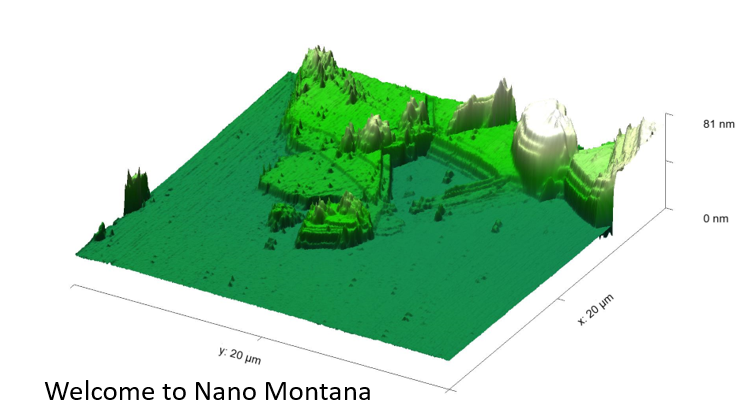
Welcome to Nano Montana
Artist: Collin Crites, Graduate student, Montana State University
NNCI Site: MONT
Tool: AFM
A very useful way to take measurements is with light but, sometimes light fails us and we have to resort to different methods. Atomic Force Microscopy (AFM) is the method I use to get around this difficulty. Instead of using how light interacts with matter to see, AFM uses matter-matter interactions to ‘see.’ Sometimes we find bubbles on the surfaces we image. Some might see these as defects, my group sees them as opportunities. My research involves making these bubbles and figuring out how and why they change the behavior of subatomic particles moving around in the material. This image looks very much like a local Montana landscape where the valley meets the mountains.


